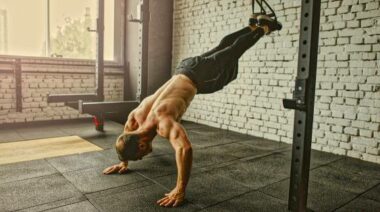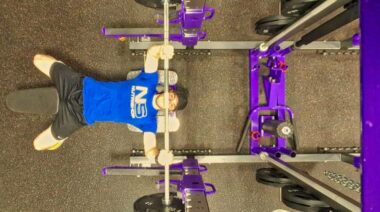I have some admittedly “out of the box” ideas when it comes to exercise. One of them is that not only is aerobic exercise (both local and systemic) a good thing in general, it might even be good for stuff we don’t normally associate it with. For example, strength and hypertrophy.
I was recently talking to a friend of mine about the intricacies of training. This particular friend also happens to be a very successful powerlifter. He balked at the idea of using light weights, and I imagine if I had advised long distance cardio work, he would have laughed at me. “The fibers change when you do light work, I’d never do that,” is just about what he said to me. This is a common fear, and at the time I had no response other than, “There needs to be more research on the effect of cardio and lightweight training on muscle in people who also lift.” You see, there is evidence that muscle fiber types easily change with training and those changes are not permanent, but does the change even occur in normal athletes who do a broad range of exercises or just in lab conditions? I needed some evidence, and today I have it.
A recent study in the Journal of Applied Physiology went to battle with this myth. Does aerobic work really hinder your progress while lifting? Specifically, in muscle hypertrophy? I’m guessing you read the title of the article, so you already know the answer, but it’s exciting for an exercise geek like me nonetheless. Not only doesn’t aerobic work slow down your lean mass gains, it actually improves them.
In the study, each participant did 5 weeks of knee extensions on one leg, and 5 weeks of knee extensions plus one legged aerobic work on the other. The resistance work was 4 sets of 7 reps, and the cardio work was 45 minutes on a bike. The numbers speak for themselves. Although the strength values gained were fairly similar there was still a slight difference. The resistance-only leg gained an extra 2% on average in isometric strength, while the leg that also did aerobic work had 5% better peak power. For lean mass, on the other hand, the leg doing the aerobic work demonstrated a significant increase in muscle volume, muscle diameter, signal intensity of the nerves, and citrate synthase activity (an enzyme important in metabolism) over the other leg, and that was despite a short program.
Over time I suspect that the benefit would be seen more in the strength realm as well. While peak power was improved only a little, that little was only over five week’s time. On a serious weight training program, I suspect the benefit would be great especially in the long run and you wouldn’t be likely to see isometric strength as being less either. That extra lean mass would eventually assist in making the athlete stronger as well.
Aerobic exercise has a plethora of benefits, but many people have viewed it as detrimental to some goals that may seem more important, like strength or size. However, we can now feel free to reap the health benefits of aerobic work and the hypertrophy benefits as well.
References:
1. Tommy Lundberg, et. al. “Aerobic exercise does not compromise muscle hypertrophy response to short-term resistance training,” Journal of Applied Physiology 114:1 (2013)
Photo courtesy of Shutterstock.






